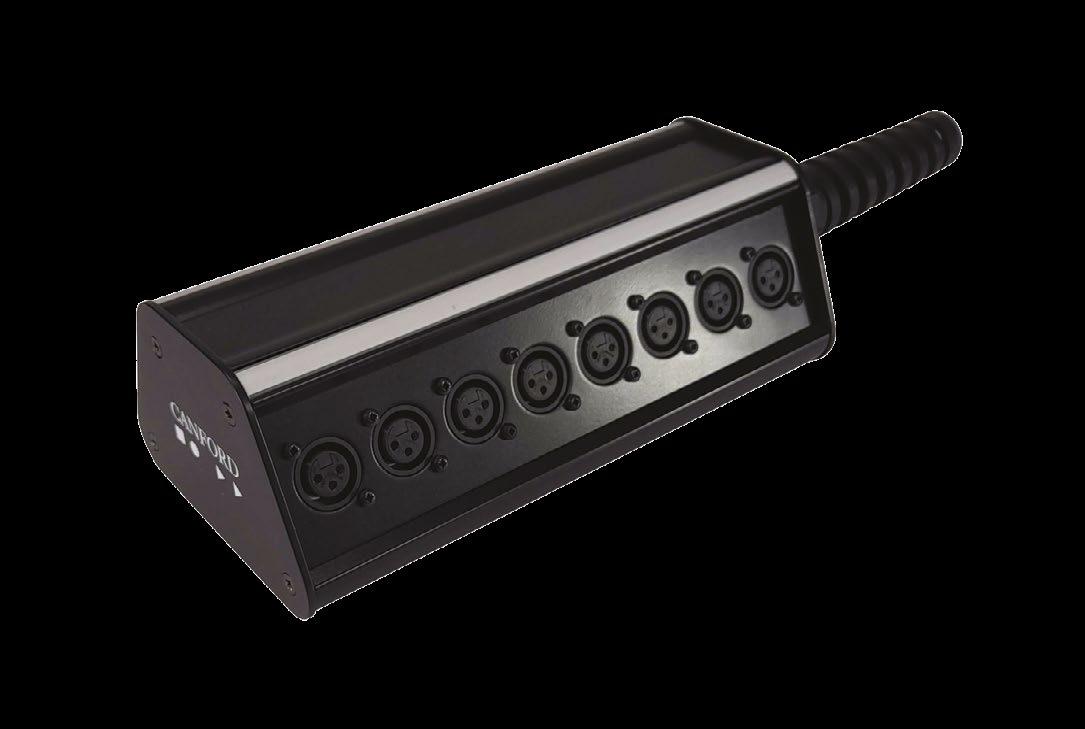74-5277 / 74-5278 / 74-5279 SHURE ADX5D RADIOMIC PORTABLE RECEIVER
Shure’s Axient Digital Wireless system, a mainstay in the touring and theatre industry is now completing the picture for Broadcast audio with the introduction of the new ADX5D portable receiver. When Shure created the world’s first single element unidirectional microphone in 1939 – the Model 55 Unidyne, its distinct styling has become the most recognizable microphone in the world. With a small design change in 1951, the Shure 55S became a celebrity in its own right, It’s the Elvis mic, the mic seen on all the posters and it even has it’s own emoji. In 1953 Shure launched their first wireless microphone with the introduction of the Vagabond 88 system, powered by two batteries the system transmitted within a performance circle of approximately 700 square feet. Even in 1953 wireless users were still subject to local regulations on transmission of wireless audio and now in 2021 UHF spectrum for wireless use is considerably smaller than it ever has been. Users of wireless audio systems have been fortunate to have access to the UHF spectrum – put simply these are radio frequencies used for the transmission of anything from TV to Radio to Video links and we share that space with those incumbents. As an engineer, you understand that your microphones are the first device in the signal chain; anything that happens from this point will directly affect the final show, production, or event. As those responsible for ensuring the audio remains uncompromised, we as professionals know the importance of retaining access to clean, high-quality RF spectrum. We now live in a connected world, where consumers expect instant connectivity across a multitude of devices. The power and convenience this brings to our daily lives is undoubtedly important, but it also means that RF spectrum has never been in such widespread use by the general public. As such the demand for wireless mics and IFB is increasing, but the space available in which to operate is decreasing. What’s critical to understand is this will make operating wireless mics more difficult. The technology available to design professional quality, digital wireless systems has now advanced to a level where we can now run much higher
54 | Source Material by Canford
channel counts in reduced clear spectrum. The improved efficiency is down to more predictable deviation of digital wireless signals when compared to a frequencymodulated analogue signal; this, in turn, allows for tighter channelto-channel frequency spacing. In many cases, digital systems can deliver nearly twice the channel count in the same spectrum as their analogue cousins. Demand for wireless microphones increases year-on-year, while at the same time, the amount of clear spectrum available is shrinking. More mics in less space means it’s going to get crowded pretty quickly, and the amount of bandwidth required needs to be reduced to keep up with demand. Wireless spectrum is a finite resource; there is only so much to go around. If the demand for wireless products across the board continues to increase at the current pace, all users will need to be more spectrally efficient (including consumer goods) In summary solid RF knowledge is crucial but remains a somewhat misunderstood skill that should be a top priority for production companies and engineers from all corners of the industry. For this reason, Shure remains committed to education, offering essential training in wireless equipment and coordination and we continue to develop products that push the industry forward.
Call UK sales on +44(0)191 418 1122 or email sales@canford.co.uk






























